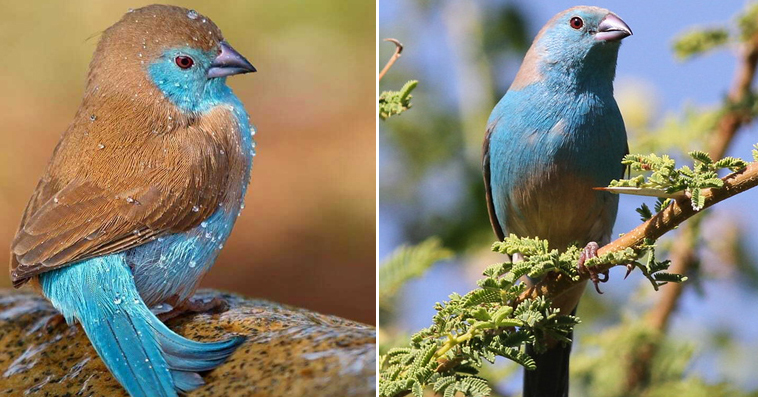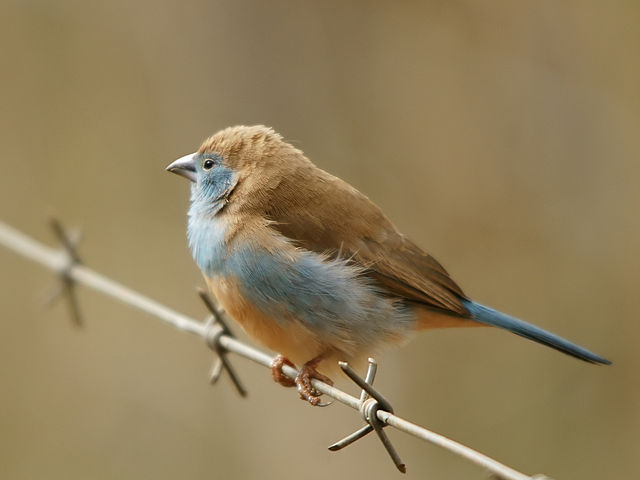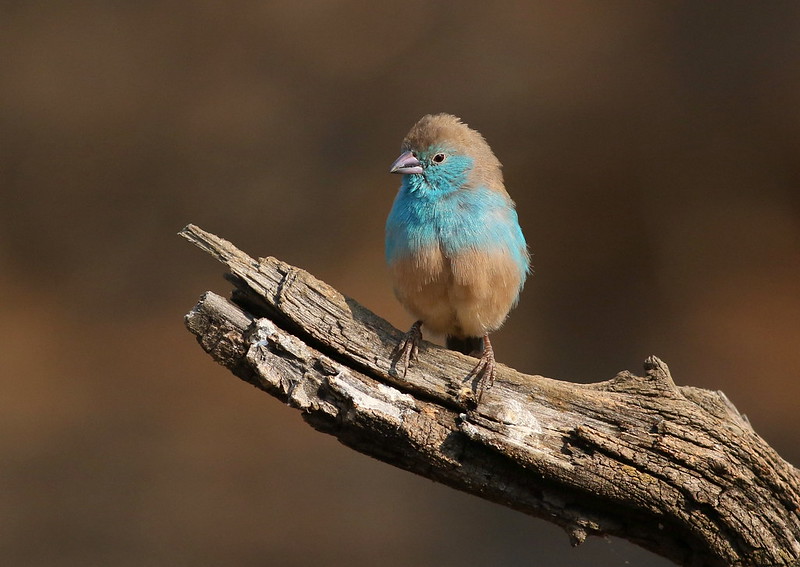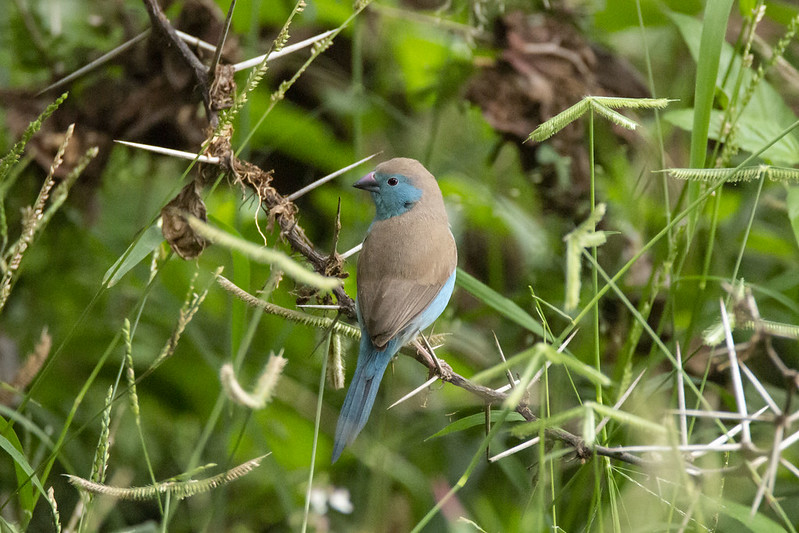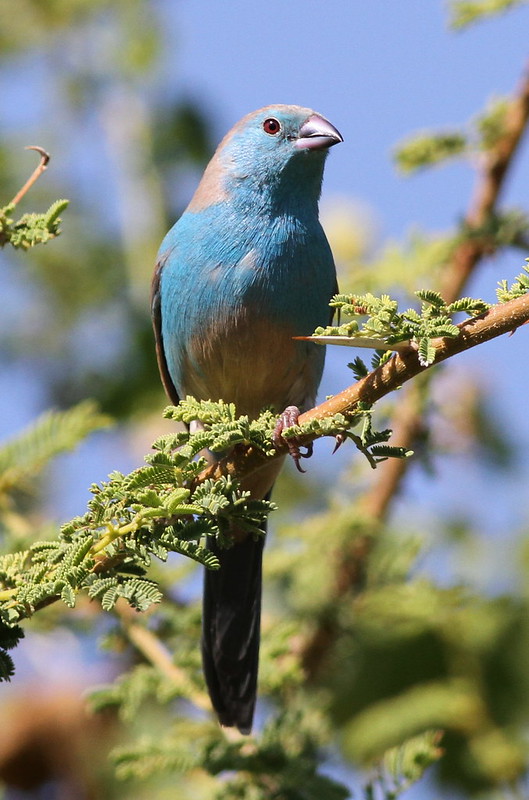Sometimes known as the Southern Waxbill, it’s easy to see why, especially in the way its powder-blue chest contrasts beautifully with its yellowish underparts and pale brown back, creating a lovely blend of colors.
Meet the Blue Waxbill.
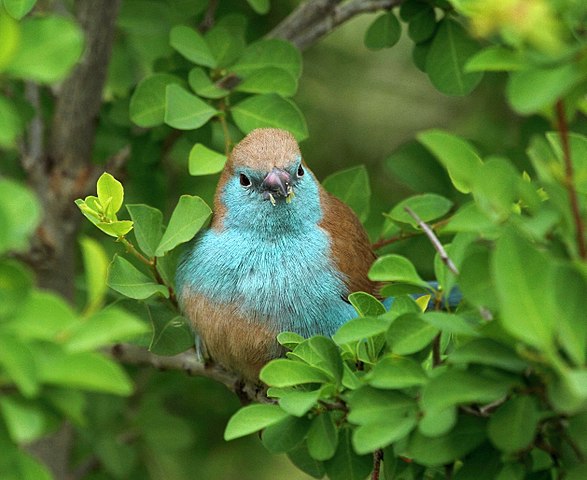
The Blue Waxbill (Uraeginthus angolensis) is a species of bird that is also known as the Southern Blue Waxbill, Blue-Breasted Waxbill, or Southern Cordon-Bleu. The male has powder-blue feathers on its cheeks, throat, breast, and flanks. Its underparts are a pale brownish color, sometimes with a yellowish buff. The upperparts of the male bird are uniformly brown.
The female has a paler appearance compared to the male, with blue coloration limited to the head, rump, tail, and upper breast.
Observe this bird in the following video:
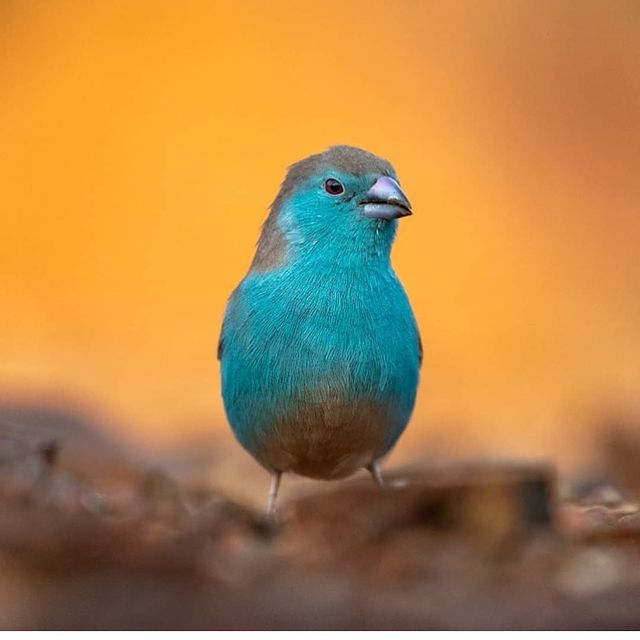
The Blue waxbill can be found in southern Africa, from Congo to Kenya, and from Tanzania in the east to northern South Africa.
This species is also present on the islands of São Tomé and Zanzibar, where it is believed to have been introduced.
The Southern blue waxbill is a versatile species that inhabits a variety of environments, but it tends to prefer savannas that are well-watered to semi-arid, particularly those with umbrella thorn trees. They also seem to prefer natural vegetation in cultivated areas and on forest perimeters.
In such habitats, the Blue waxbill feeds on grass seeds, termites, and other insects. It has also been observed consuming fallen fruits from Boscia albitrunca.
